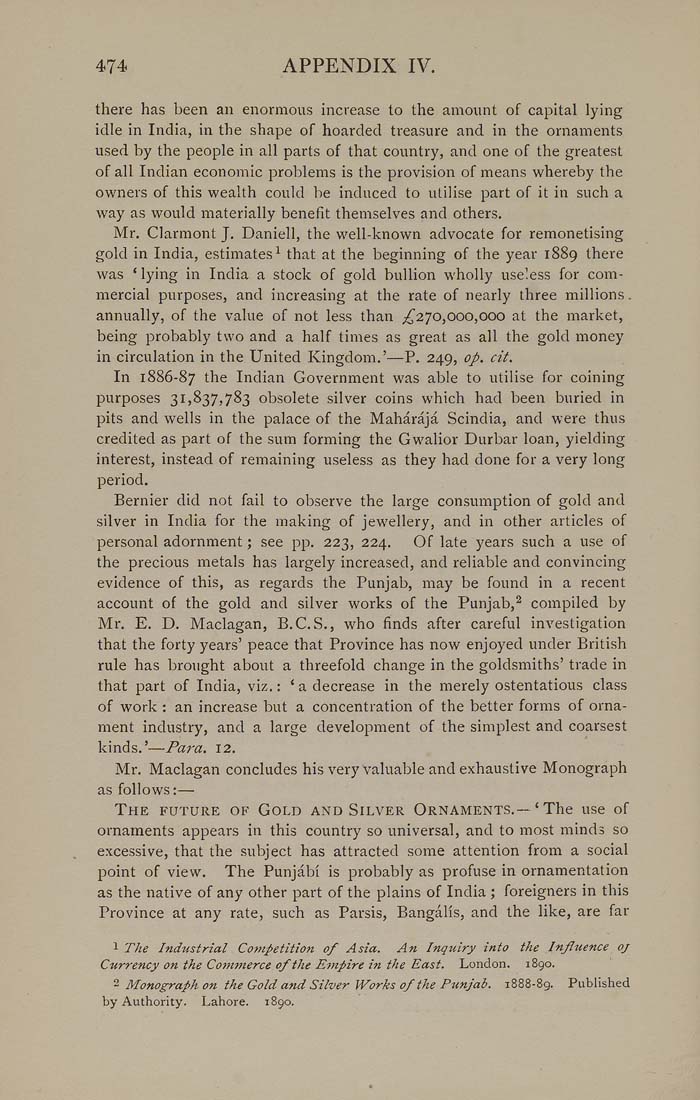474 APPENDIX IV.
there has been an enormous increase to the amount of capital lying
idle in India, in the shape of hoarded treasure and in the ornaments
used by the people in all parts of that country, and one of the greatest
of all Indian economic problems is the provision of means whereby the
owners of this wealth could be induced to utilise part of it iu such a
way as would materially benefit themselves and others.
Mr. Clarmont J. Daniell, the well-known advocate for remonetising
gold in India, estimates' that at the beginning of the year 1889 there
was 'lying in India a stock of gold buUion wholly useless for com¬
mercial purposes, and increasing at the rate of nearly three millions,
annually, of the value of not less than ;£'27o,ooo,ooo at the market,
being probably two and a half times as great as all the gold money
in circulation in the United Kingdom.'—P. 249, op. cit.
In 1886-87 the Indian Government was able to utilise for coining
purposes 31,837,783 obsolete silver coins which had been buried in
pits and wells in the palace of the Maharaja Scindia, and were thus
credited as part of the sum forming the Gwalior Durbar loan, yielding
interest, instead of remaining useless as they had done for a very long
period.
Bernier did not fail to observe the large consumption of gold and
silver in India for the making of jewellery, and in other articles of
personal adornment; see pp. 223, 224. Of late years such a use of
the precious metals has largely increased, and reliable and convincing
evidence of this, as regards the Punjab, may be found in a recent
account of the gold and silver works of the Punjab,^ compiled by
Mr. E. D. Maclagan, B.C.S., who finds after careful investigation
that the forty years' peace that Province has now enjoyed under British
rule has brought about a threefold change in the goldsmiths' trade in
that part of India, viz.: ' a decrease in the merely ostentatious class
of work : an increase but a concentration of the better forms of orna¬
ment industry, and a large development of the simplest and coarsest
kinds.'—Para. 12.
Mr. Maclagan concludes his very valuable and exhaustive Monograph
as follows:—
The future of Gold and Silver Ornaments.—' The use of
ornaments appears in this country so universal, and to most minds so
excessive, that the subject has attracted some attention from a social
point of view. The Punjabi is probably as profuse in ornamentation
as the native of any other part of the plains of India ; foreigners in this
Province at any rate, such as Parsis, Bangalis, and the like, are far
1 The Industrial Competition of Asia. An Inquiry into tlie Influence oj
Currency on tJie Commerce of ttie Empire in ttie East. London. 1890.
''■ Monograph on the Gold and Silver Wortcs of the Punjab. 1888-89. Published
by Authority. Lahore. 1850.
|








